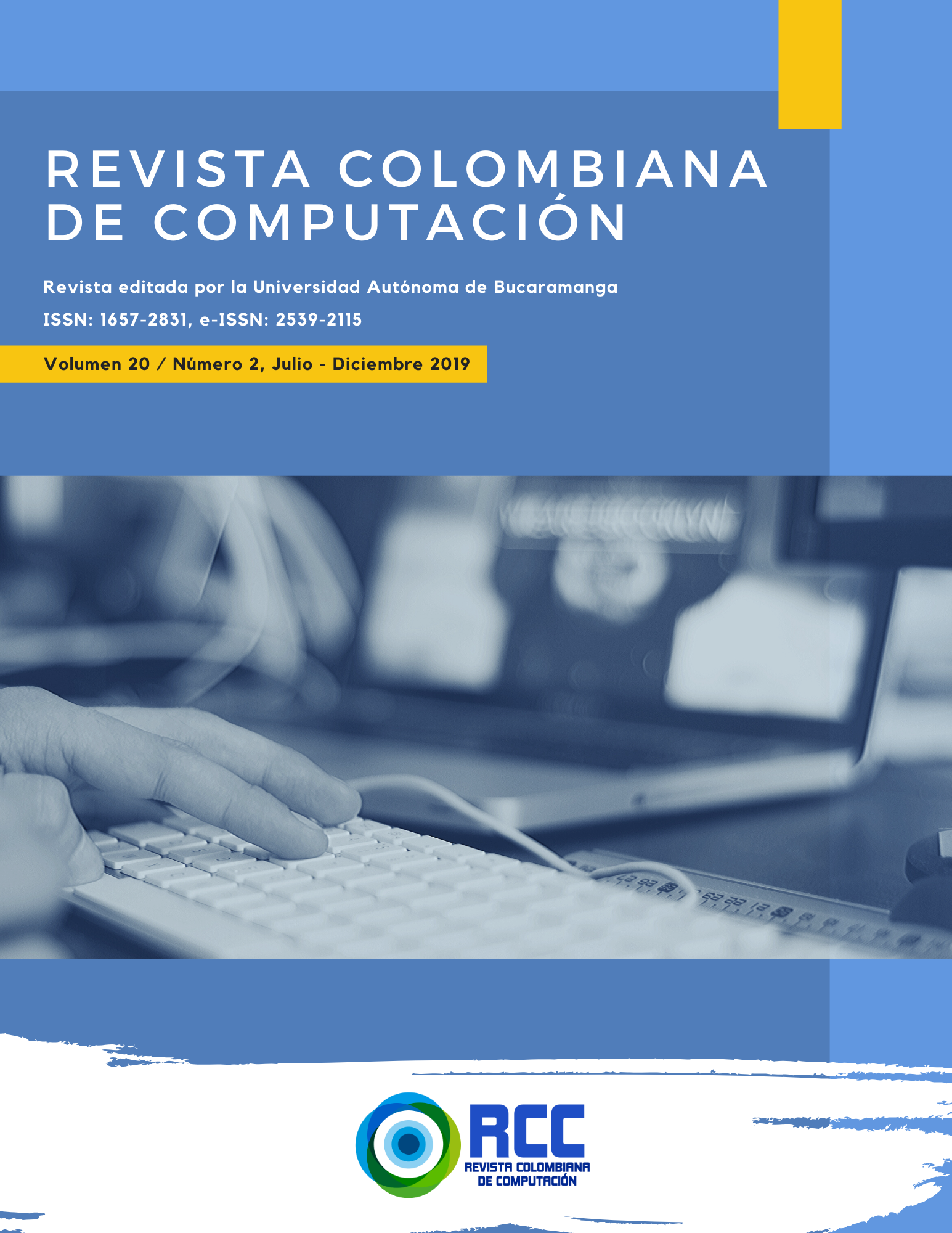Aprendizaje no supervisado: aplicación en epilepsia
Resumen
La epilepsia es uno de los trastornos neurológicos comunes caracterizado por convulsiones recurrentes. El objetivo principal de este artículo es dar a conocer el análisis de los resultados presentados en las gráficas de simulación de los datos de entrenamiento. Los datos fueron recolectados mediante el sistema 10-20. El sistema "10-20" es un método reconocido internacionalmente, este describe la ubicación de electrodos en la cabeza para una prueba de EEG. Se muestran las diferencias obtenidas entre las pruebas generadas con las anomalías de los datos de prueba a partir de los datos de entrenamiento. Finalmente, se interpretan los resultados y se discute sobre la eficacia del procedimiento.
Referencias bibliográficas
Aliper, A., Plis, S., Artemov, A., Ulloa, A., Mamoshina, P., Zhavoronkov, A., & Albuquerque, N. (2016). HHS Public Access, 13(7), 2524–2530. https://doi.org/10.1021/acs.molpharmaceut.6b00248.Deep
Alshebeili, S. A., Alshawi, T., Ahmad, I., & El-samie, F. E. A. (2014). EEG seizure detection and prediction algorithms : a survey. EURASIP Journal on Advances in Signal Processing, 183(1), 1,21. https://doi.org/10.1186/1687-6180-2014-183
Beatriz Pérez Salazar, Á., & Lillia Hernández López, D. (2007). Epilepsia: aspectos básicos para la práctica psiquiátrica Epilepsia: aspectos básicos para la práctica psiquiátrica Title: Epilepsy: Basic Aspects for the Practice of Psychiatry. Rev. Colomb. Psiquiat, XXXVI XXXV(1), 175–186.
Chang, C.-C., & Lin, C.-J. (2011). Libsvm. ACM Transactions on Intelligent Systems and Technology, 2(3), 1–27. https://doi.org/10.1145/1961189.1961199
Chisci, L., Mavino, A., Perferi, G., Sciandrone, M., Anile, C., Colicchio, G., & Fuggetta, F. (2010). Real-Time Epileptic Seizure Prediction Using AR Models and Support Vector Machines. IEEE Transactions on Biomedical Engineering, 57(5), 1124–1132. https://doi.org/10.1109/TBME.2009.2038990
Cruces, H. De. (2014). Tipos de crisis epilépticas y pseudocrisis Diferencial characteristics of epileptic seizure and pseudoseizures, 105–107.
Dreiseitl, S., & Ohno-Machado, L. (2002). Logistic regression and artificial neural network classification models: A methodology review. Journal of Biomedical Informatics, 35(5–6), 352–359. https://doi.org/10.1016/S1532-0464(03)00034-0
Dudoit, S., Fridlyand, J., & Speed, T. P. (2002). Comparison of discrimination methods for the classification of tumors using gene expression data. Journal of the American Statistical Association, 97(457), 77–86. https://doi.org/10.1198/016214502753479248
Escalona-Morán, M., Cosenza, M. G., Guillén, P., & Coutin, P. (2007). Synchronization and clustering in electroencephalographic signals. Chaos, Solitons and Fractals, 31(4), 820–825. https://doi.org/10.1016/j.chaos.2005.10.049
Fuertes, B., López, R., & Gil, P. (2007). Epilepsia. Tratado de Geriatria Para Residentes, 519–530.
Garg, S., & Narvey, R. (2013). Denoising & feature extraction of eeg signal using wavelet transform. International Journal of Engineering Science and Technology., 5(06), 1249–1253.
Griffis, J. C., Allendorfer, J. B., & Szaflarski, J. P. (2016). Voxel-based Gaussian naïve Bayes classification of ischemic stroke lesions in individual T1-weighted MRI scans. Journal of Neuroscience Methods, 257, 97–108. https://doi.org/10.1016/j.jneumeth.2015.09.019
Kuremoto, T., Kimura, S., Kobayashi, K., & Obayashi, M. (2014). Time series forecasting using a deep belief network with restricted Boltzmann machines. Neurocomputing, 137, 47–56. https://doi.org/10.1016/j.neucom.2013.03.047
Kurzynski, M., Krysmann, M., Trajdos, P., & Wolczowski, A. (2016). Multiclassifier system with hybrid learning applied to the control of bioprosthetic hand. Computers in Biology and Medicine, 69, 286–297. https://doi.org/10.1016/j.compbiomed.2015.04.023
Langkvist, M., Karlsson, L., & Loutfi, A. (2014). A review of unsupervised feature learning and deep learning for time-series modeling. Pattern Recognition Letters, 42(1), 11–24. https://doi.org/10.1016/j.patrec.2014.01.008
López-meraz, M. L., Rocha, L., Miquel, M., Hernández, M. E., Cárdenas, R. T., Coria-ávila, G. A., … Manzo, J. (2009). Conceptos básicos de la epilepsia. Revista Medica de La Universidad Veracruzana, 9(2), 31–37.
Mirowski, P., Madhavan, D., LeCun, Y., & Kuzniecky, R. (2009). Classification of patterns of EEG synchronization for seizure prediction. Clinical Neurophysiology, 120(11), 1927–1940. https://doi.org/10.1016/j.clinph.2009.09.002
Mirowski, P. W., Lecun, Y., Madhavan, D., & Kuzniecky, R. (2008). Comparing SVM and Convolutional Networks for Epileptic Seizure.
Mirowski, P. W., Madhavan, D., & Lecun, Y. (2007). Time-delay neural networks and independent component analysis for eeg-based prediction of epileptic seizures propagation. Advancement of Artificial Intelligence Conference, 1892–1893.
Soleimani-B., H., Lucas, C., N. Araabi, B., & Schwabe, L. (2012). Adaptive prediction of epileptic seizures from intracranial recordings. Biomedical Signal Processing and Control, 7(5), 456–464. https://doi.org/10.1016/j.bspc.2011.11.007
Tsai, C. F. (2014). Combining cluster analysis with classifier ensembles to predict financial distress. ACM Transactions on Intelligent Systems and Technology, 16(1), 46–58. https://doi.org/10.1016/j.inffus.2011.12.001
Valencia, J. F., Melia, U. S. P., Vallverdú, M., Borrat, X., Jospin, M., Jensen, E. W., … Caminal, P. (2016). Assessment of nociceptive responsiveness levels during sedation-analgesia by entropy analysis of EEG. Entropy, 18(3). https://doi.org/10.3390/e18030103
Wang, D., & Shang, Y. (2014). Modeling Physiological Data with Deep Belief Networks. International Journal of Education Technology, 3(5), 505–511. https://doi.org/10.7763/IJIET.2013.V3.326.Modeling
Wulsin, D., Blanco, J., Mani, R., & Litt, B. (2010). Semi-supervised anomaly detection for EEG waveforms using deep belief nets. Proceedings - 9th International Conference on Machine Learning and Applications, ICMLA 2010, (April 2016), 436–441. https://doi.org/10.1109/ICMLA.2010.71
Wulsin, D. F., Gupta, J. R., Mani, R., Blanco, J. A., & Litt, B. (2011). Modeling electroencephalography waveforms with semi-supervised deep belief nets: Fast classification and anomaly measurement. Journal of Neural Engineering, 8(3). https://doi.org/10.1088/1741-2560/8/3/036015
Descargas












